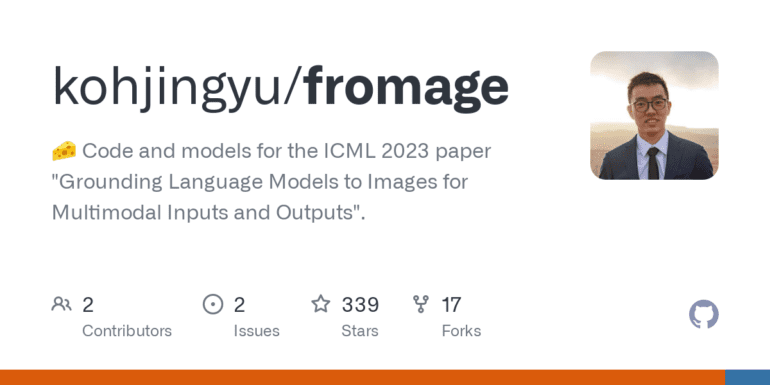TL;DR:
- CMU researchers introduce FROMAGe, an AI model that combines text and images.
- Language models can be trained to understand and generate multimodal content.
- FROMAGe leverages contrastive learning and a new [RET] token for image-text retrieval.
- It enables contextual image retrieval, zero-shot visual conversation, and improved discourse context sensitivity.
- Pretrained text-only LLMs can be repurposed for visual tasks.
- FROMAGe sets a new standard for accuracy in handling lengthy and complex free-form text.
- The research opens doors to future models that seamlessly integrate text and visuals.
Main AI News:
In the fast-paced world of artificial intelligence (AI), large language models (LLMs) have garnered significant attention for their remarkable ability to generate human-like text and handle complex inquiries. These LLMs, trained on massive text corpora, possess an unparalleled aptitude for language tasks. However, their reliance on text-only data poses limitations when it comes to understanding and incorporating real-world concepts that demand visual comprehension. Consequently, existing language models struggle with tasks requiring visual reasoning and fail to generate accompanying visuals. In this article, we delve into a groundbreaking solution proposed by CMU researchers—an innovative approach that effectively harnesses the power of frozen LLMs to enable multimodal text and image generation.
The key to unlocking multimodal capabilities lies in training the language model to learn a new token—dubbed [RET]—that acts as a representation of an image for image-text retrieval. Additionally, the researchers leverage contrastive learning to establish a linear mapping between the [RET] embeddings for a given caption and the corresponding visual embeddings for the associated picture. Notably, only the linear layers’ weights and the [RET] token embedding are updated during training, leaving the majority of the model frozen. This unique approach ensures optimal memory and computational efficiency.
Once trained, the model showcases an impressive array of skills. In addition to the original text-only LLM’s prowess in generating text, the newly acquired multimodal conversation and reasoning abilities further enhance its capabilities. Importantly, this suggested methodology is model-independent and can serve as the foundation for future releases of more robust and expansive LLMs.
A standout contribution of this research lies in the Frozen Retrieval Over Multimodal Data for Autoregressive Generation (FROMAGe) model, which exemplifies the remarkable progress made in text-to-image retrieval by autoregressive LLMs. This model stands out by effectively anchoring LLMs to visual information through the combination of picture captioning and contrastive learning. Unlike previous approaches that heavily rely on webscale interleaved image-text data, FROMAGe demonstrates impressive few-shot multimodal capabilities using solely image caption pairings. Notably, it outperforms previous models when handling lengthy and intricate free-form text, emphasizing its superior accuracy.
Furthermore, the researchers illustrate how pretrained text-only LLMs can be repurposed for tasks necessitating visual input. They showcase the model’s ability to perform contextual image retrieval from sequences of interweaving pictures and text, exhibit excellent zero-shot performance in visual conversation, and demonstrate enhanced discourse context sensitivity for image retrieval. These results lay the foundation for the development of models that can learn from and generate coherent multimodal sequences.
To foster further research and development in this domain, the CMU researchers plan to release their code and pretrained models to the public in the near future. This open approach will undoubtedly spur innovation and fuel progress in the field of multimodal language models. The introduction of FROMAGe represents a significant milestone in unlocking the potential of frozen LLMs, opening new doors for AI applications that seamlessly combine text and images.
Conclusion:
The introduction of FROMAGe and its multimodal capabilities marks a significant advancement in the field of language models. By effectively combining text and images, this model has the potential to revolutionize various industries. Its ability to generate coherent multimodal sequences, perform contextual image retrieval, and excel in complex text comprehension positions it as a valuable tool for businesses seeking to enhance their AI-driven applications. As the market demands more sophisticated and versatile language models, FROMAGe paves the way for the development of stronger and more impactful AI solutions in the future.

